
Electric Scooter vs Electric Bike: Buyer's Guide
Choosing between an electric scooter and an electric bike can be challenging, especially with so many models and features available. From speed and range to ride comfort and portability, each option has unique strengths. In this ultimate performance guide, we break down key differences to help you make an informed choice. Whether you’re commuting in the city or exploring off-road trails, understanding these factors ensures you pick the perfect electric ride.
iHoverboard Electric Scooter vs Electric Bikes: Performance Comparison
When deciding between an iHoverboard electric scooter and an electric bike, understanding their performance differences is crucial. From speed and range to hill climbing and maneuverability, each option offers distinct advantages.
Top Speed
Off-road e-scooters like the iX7Pro can reach speeds up to 38 mph, while city-focused scooters generally top out at 20–28 mph. Electric bikes usually achieve 20–22 mph, though pedal-assist options can extend your effective speed. Scooters offer rapid acceleration in urban traffic, whereas e-bikes maintain steady momentum on hills and longer routes.
Battery Range
Scooters provide a solid range of 22–50 miles depending on the model, while e-bikes can often travel 25–65 miles per charge. Pedal-assist on e-bikes allows riders to extend their effective range even further.
Hill Climbing & Acceleration
Scooters deliver fast acceleration from a standstill, perfect for stop-and-go urban traffic, but are most effective on moderate inclines. E-bikes offer powerful, steady climbing on steep gradients, ideal for hilly routes or longer journeys.
Ride Stability & Terrain Handling
iHoverboard scooters are stable with proper handling and perform well on urban streets, with some models equipped for light off-road use. E-bikes benefit from a naturally balanced seated design and versatile tires, handling varied terrain smoothly.
Weather Resistance
Scooters perform reliably in dry and mild wet conditions, especially with pneumatic or tubeless tires. E-bikes are generally resilient across different weather, thanks to their design and protective components.
Rider Position & Maneuverability
Scooter riders stand, which improves visibility and makes navigating tight spaces easier. E-bike riders sit, providing comfort over long rides and better control on uneven surfaces.
|
Criteria |
iHoverboard Electric Scooter |
Electric Bike |
|
Top Speed |
Up to 28 mph |
Up to 21–22 mph |
|
Battery Range |
22–50 miles |
25–65 miles |
|
Hill Climbing |
Moderate inclines |
Steep gradients |
|
Acceleration |
Quick from standstill |
Steady, powerful |
|
Ride Stability |
Stable with technique |
Naturally balanced |
|
Terrain Handling |
Urban and light off-road |
Versatile, most conditions |
|
Weather Resistance |
Good with proper tires |
Performs well in varied weather |
|
Rider Position |
Standing |
Seated |
|
Maneuverability |
Excellent in tight spaces |
Good overall stability |
Electric Scooter vs Electric Bike: Daily Commuting Comparison
Electric scooters and e-bikes offer unique advantages for daily commuting, with differences in convenience, exercise, and cargo capacity. Understanding these factors helps you choose the right ride for your lifestyle.
Time-Saving Factor
E-scooters excel in dense urban areas where quick maneuverability and compact size allow you to navigate traffic and crowded streets efficiently. Off-road or higher-speed models also perform well for slightly longer trips.
E-bikes are ideal for longer commutes and routes with varied terrain, thanks to their stability, larger wheels, and pedal-assist that maintain consistent speed with less effort. Both vehicles let riders use bike lanes to bypass traffic, cutting commute times significantly compared to cars or public transport.
Physical Activity: Exercise Benefits
E-bikes offer adjustable exercise through pedal-assist modes. Riders can choose higher resistance levels for a more intense workout or lower levels to arrive fresh without sweating excessively.
E-scooters require minimal physical effort, focusing on standing and steering, making them perfect for short city trips or arriving at work relaxed and ready.
Carrying Capacity: Shopping and Daily Essentials
E-bikes provide better cargo options with rear racks, front baskets, and mounting points for panniers, making them suitable for grocery runs, work items, or even small deliveries.
E-scooters usually limit carrying options to a handlebar bag or backpack, which works for personal items but isn’t ideal for larger shopping loads.
Electric Scooter vs Electric Bike Portability Features: Folding, Weight & Storage
Portability is a key factor when choosing between an electric scooter and an electric bike, especially for urban commuters with limited storage space or mixed-mode travel needs.
Folding Capabilities
E-scooters are designed for quick and easy folding. Most models collapse in just a few seconds using a simple latch system, reducing to a compact size that fits under desks, in car trunks, or on public transport. Premium scooters may include foldable handlebars or removable parts for even smaller storage dimensions.
Folding e-bikes are available, but their larger frames and wheels make them less compact than scooters. Even folded, a typical e-bike occupies about 85cm x 65cm x 40cm and may require wall-mounted racks or ceiling hooks for storage.
Storage Space Considerations
E-bikes generally need more floor space, around 1.8m x 0.7m when parked, and are less convenient for tight apartments or offices. Storage solutions include:
-
Wall-mounted racks to save floor space
-
Vertical stands for small flats
-
Weatherproof bike sheds for outdoor storage
Scooters, in contrast, tuck away easily in closets, hallways, or under desks, making them more adaptable for urban living.
Weight Comparison
E-scooters are lightweight, typically ranging from 12–23 lbs (5.5–10.5 kg), with ultra-portable models as light as 9 kg. This makes them easy to carry up stairs or lift into vehicles.
E-bikes are heavier due to larger frames, batteries, and wheels:
-
City e-bikes: 40–55 lbs (18–25 kg)
-
Mountain e-bikes: 48–66 lbs (22–30 kg)
-
Folding e-bikes: 33–44 lbs (15–20 kg)
Weight becomes an important consideration for storage, transport, or multi-level buildings, even if the battery can be removed temporarily to reduce load.
By considering folding, weight, and storage, riders can determine which option best suits their daily commuting and living spaces.
Electric Scooter vs Electric Bike Cost Considerations: Purchase, Maintenance & Longevity
When choosing between an electric scooter and an electric bike, understanding the total cost of ownership—including purchase, maintenance, and battery lifespan—is essential for making an informed decision.
Initial Investment
Electric scooters offer a lower entry point, with city models typically priced between £300–£500 and higher-performance or off-road models ranging from £500–£750. Premium scooters with dual motors or long-range batteries may reach £1,000+.
Electric bikes generally start slightly higher, from £350–£500 for basic models. Mid-range e-bikes with advanced features, larger batteries, and multiple gears often range from £600–£1,500, reflecting their more complex design and extended range capabilities.
Maintenance Costs
Scooters are easier and cheaper to maintain due to simpler mechanics:
-
Tyre replacements: £20–£50 each
-
Brake servicing: £30–£60
-
Annual check-up/service: £50–£120
E-bikes have more components, including chains, derailleurs, and larger brakes, which may increase upkeep costs: -
Tyre replacements: £30–£70 each
-
Brake servicing: £40–£90
-
Annual service: £80–£200
Insurance is recommended for both, with basic cover starting around £50–£100 per year.
Battery Lifespan & Replacement
Battery care is critical for long-term savings. Typical lithium-ion batteries last:
-
E-scooters: 300–500 charge cycles (approx. 1–3 years with daily use)
-
E-bikes: 500–1,000 cycles (approx. 2–5 years)
Replacement costs vary by model and capacity:
-
E-scooter batteries: £100–£300
-
E-bike batteries: £250–£800
Proper charging habits and avoiding extreme temperatures can significantly extend battery life for both vehicles.
Cost Comparison Table
|
Cost Factor |
Electric Scooters |
Electric Bikes |
|
Starting Price |
£300–£500 |
£350–£500 |
|
Mid-Range Models |
£500–£750 |
£600–£1,500 |
|
Annual Maintenance |
£100–£190 |
£150–£300 |
|
Battery Lifespan |
1–3 years |
2–5 years |
|
Battery Replacement |
£100–£300 |
£250–£800 |
|
5-Year Ownership Cost |
£800–£1,700 |
£950–£2,200 |
By considering purchase price, upkeep, and battery longevity, you can select the vehicle that offers the best long-term value for your commuting or recreational needs.
iHoverboard Electric Bikes in Comparison
|
Spec |
||||
| Image |  |
 |
 |
 |
|
Motor |
500W |
350W (Peak 500W) |
500W (Rated 250W) |
500W (Rated 250W) |
|
Battery |
36V 7.8Ah (281Wh) |
36V 7.8Ah (281Wh) |
36V 10.4Ah (374Wh) |
36V 10.4Ah (378Wh) |
|
Range |
25–40 miles (40–65 km) |
22–28 miles (35–45 km) |
35–55 miles (55–90 km) |
44–60 miles (70–100 km) |
|
Top Speed |
20 mph (32 km/h) |
15.5 mph (25 km/h) |
20 mph (32 km/h) |
22 mph (35 km/h) |
|
Weight |
52 lbs (23.7 kg) |
45 lbs (20.5 kg) |
58 lbs (26.5 kg) |
55 lbs (24.8 kg) |
|
Load Capacity |
264 lbs (120 kg) |
265 lbs (120 kg) |
264 lbs (120 kg) |
330 lbs (150 kg) |
|
Tires |
14×1.95" |
16×2.1" |
16×2.15" |
26×1.95" |
|
Suspension |
Rear Suspension |
Front Suspension |
Front Suspension |
Front Fork Suspension |
|
Brakes |
Dual Disc (Hydraulic) |
Dual Disc |
Dual Disc |
Mechanical Disc |
|
Rider Height |
4’9”–6’1” (150–185 cm) |
5’1”–6’2” (155–188 cm) |
5’3”–6’3” (160–192 cm) |
5’3”–6’5” (160–195 cm) |
|
Notes |
Foldable, intelligent display, adaptive motor |
Step-thru, city-focused |
Foldable, low-step, 3+1 modes |
MTB style, Shimano 7-speed, LCD display |
iHoverboard Electric Scooter in Comparison
|
Spec / Model |
||||||
| Image |  |
 |
 |
 |
 |
 |
|
Motor Power |
800 W (rear-wheel) |
800 W (rear-wheel) |
1000 W |
1200 W (rear-wheel) |
2000 W (dual motor) |
1250 W (peak) / 1000 W rated |
|
Max Speed |
25 mph (40 km/h) |
28 mph (45 km/h) |
28 mph (45 km/h) |
28 mph (45 km/h) |
38 mph (60 km/h) |
32 mph (≈52 km/h) |
|
Range |
18–25 miles (30–40 km) |
25–28 miles (40–45 km) |
31–34 miles (50–55 km) |
30–37 miles (50–60 km) |
50 miles (80 km) |
31–34 miles (50–55 km) |
|
Battery |
48V 10Ah (480 Wh) |
48V 15Ah (720 Wh) |
48V 15Ah (720 Wh) |
48V 17.5Ah (840 Wh) |
48V 17.5Ah (840 Wh) |
48V 15.6Ah (748.8 Wh) |
|
Charging Time |
6–7 hrs |
6–8 hrs |
5–7 hrs |
7–9 hrs |
7–9 hrs |
6–8 hrs |
|
Tires |
10" pneumatic off-road |
10" pneumatic off-road |
11" pneumatic off-road |
11" pneumatic off-road |
10" tubeless off-road |
10" air-filled all-terrain |
|
Suspension |
Dual front & rear (4 pts) |
Dual front & rear |
Dual front & rear (4-arm) |
Dual front & rear |
Dual front & rear |
Dual-arm suspension |
|
Brakes |
Dual disc + E-ABS |
Disc + E-ABS |
Triple braking (disc + E-ABS) |
Front disc; rear disc + E-ABS |
Dual disc + electronic |
Dual disc + E-ABS |
|
Water Resistance |
IP54 |
IPX4 |
IPX4 |
IPX4 |
IPX4 |
IPX4 |
|
Weight (net) |
48.5 lbs (22 kg) |
57.4 lbs (26 kg) |
60 lbs (27.3 kg) |
54.9 lbs (24.9 kg) |
65.4 lbs (29.7 kg) |
59.5 lbs (27 kg) |
|
Load Capacity (max rider) |
264 lbs (120 kg) |
330 lbs (150 kg) |
330 lbs (150 kg) |
330 lbs (150 kg) |
330 lbs (150 kg) |
330 lbs (150 kg) |
|
Climbing Angle / Hill |
20–25% |
20–25% |
20–25% |
up to 35% |
25% |
30% |
|
App / Connectivity |
Yes (Minirobot APP, Bluetooth) |
Yes (Minirobot APP, Bluetooth) |
Yes |
Yes (NFC + app features listed) |
Yes (dashboard; app not specified) |
Yes (Circooter Club APP) |
|
Special Features |
3-step folding, LCD + app, 4 suspensions, ambient lights |
LED dashboard, cruise, turn signals, 3-step folding |
4 riding modes, 3-sec folding, adjustable handlebar, ambient lights |
NFC keyless unlock, magnesium frame, 2-step folding, ambient lights |
Dual/single motor modes, long range, magnesium frame, multiple modes |
Fast accel (15 mph in 3s), 6061 aluminium frame, IPX5 display, all-around lighting |
|
Price (sale) |
£428.99 |
£458.99 |
£499.99 |
£589.99 |
£745.99 |
£619.99 |
Conclusion
Choosing between an electric scooter and an electric bike ultimately depends on your lifestyle, commuting needs, and riding preferences. E-scooters excel in urban environments, offering lightweight portability, quick acceleration, and easy storage for short trips or crowded streets. Electric bikes provide greater range, higher load capacity, and a more comfortable seated ride, making them ideal for longer commutes, varied terrain, and daily exercise.
By weighing factors such as speed, battery life, ride comfort, portability, and overall cost, you can make an informed decision that fits your routine and personal priorities. Whether you prioritize convenience and agility or endurance and versatility, both options offer efficient, eco-friendly alternatives to traditional transportation.










































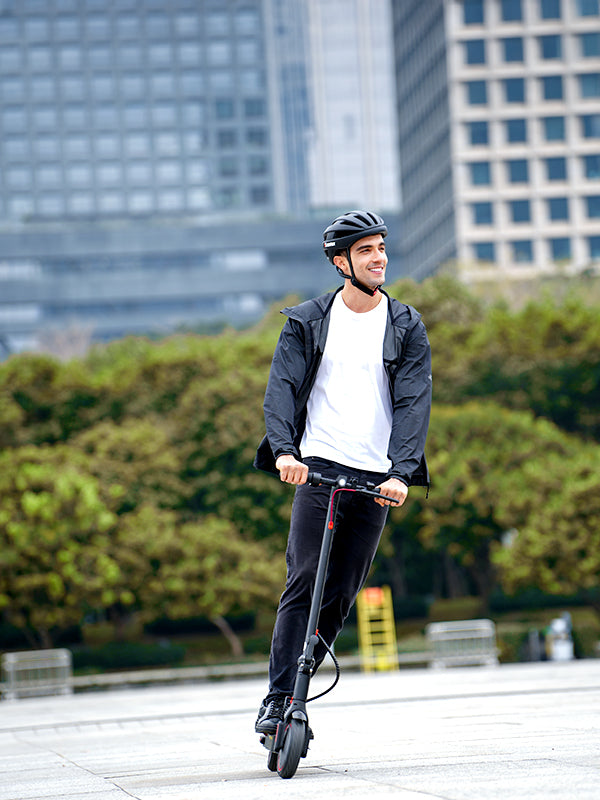




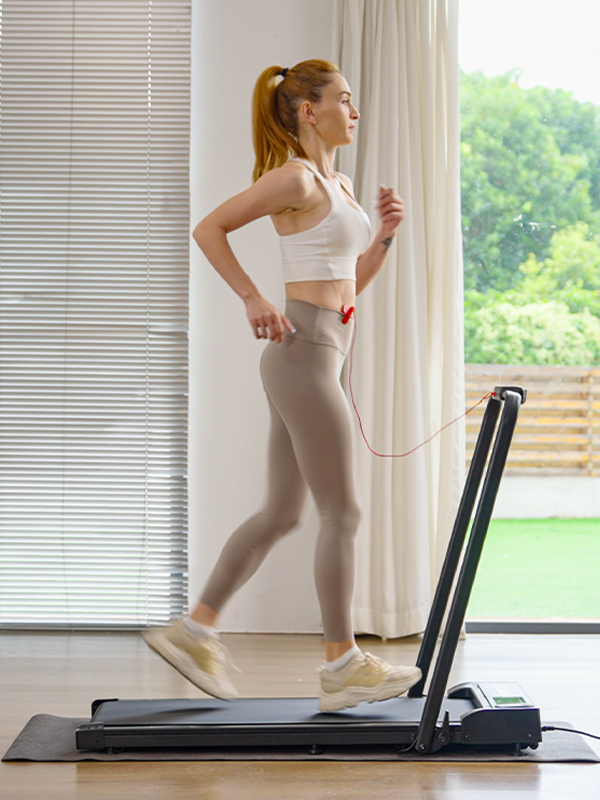





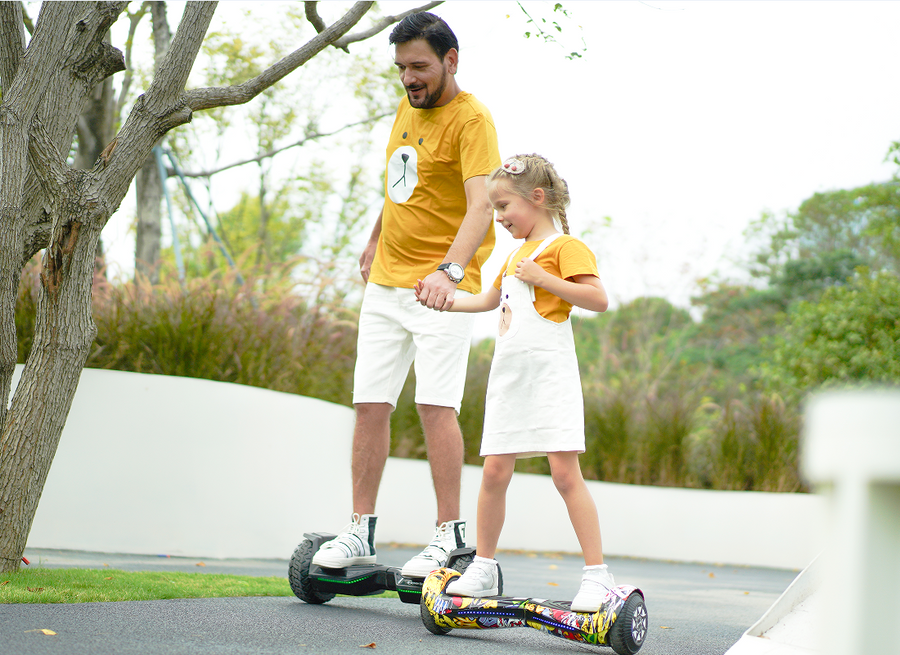
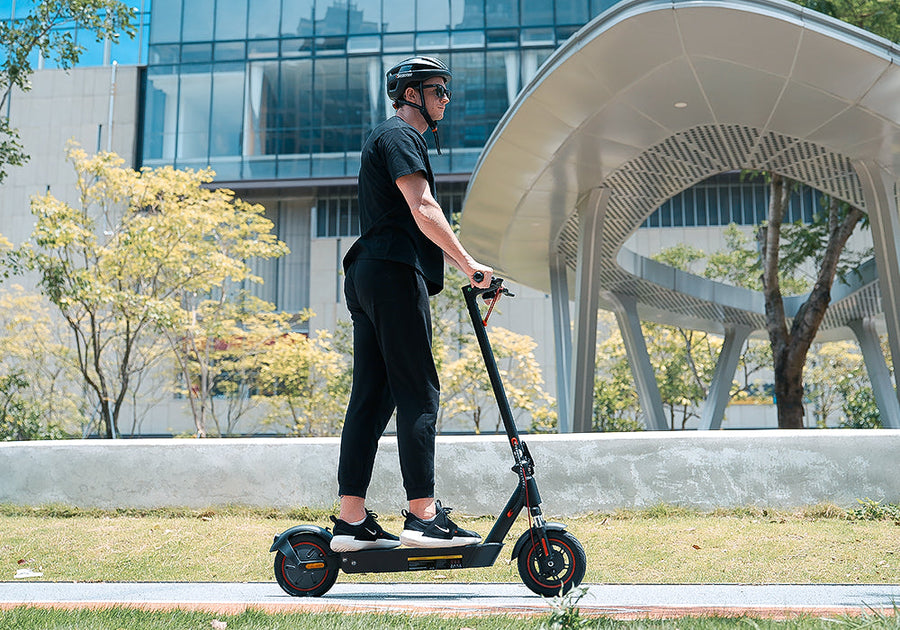

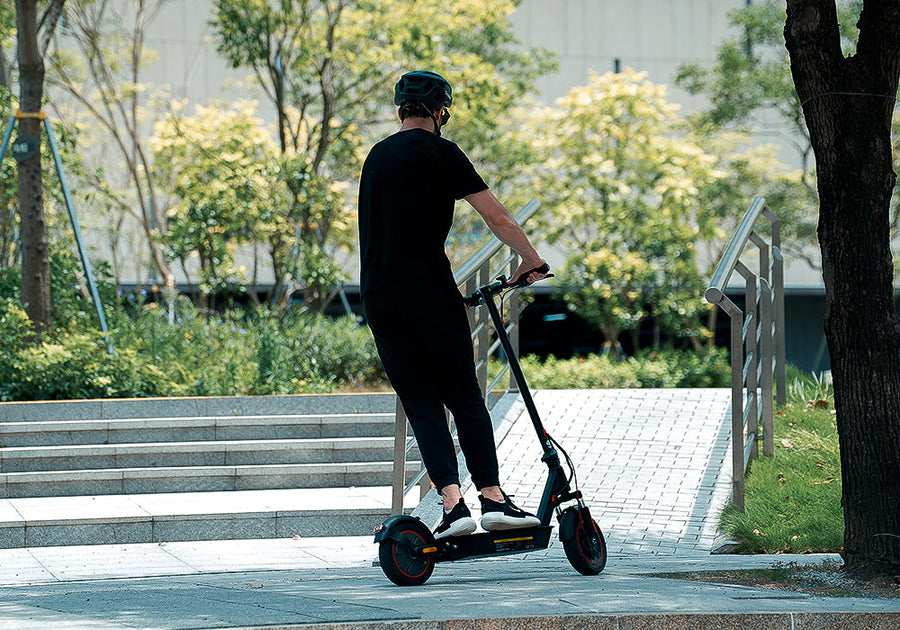


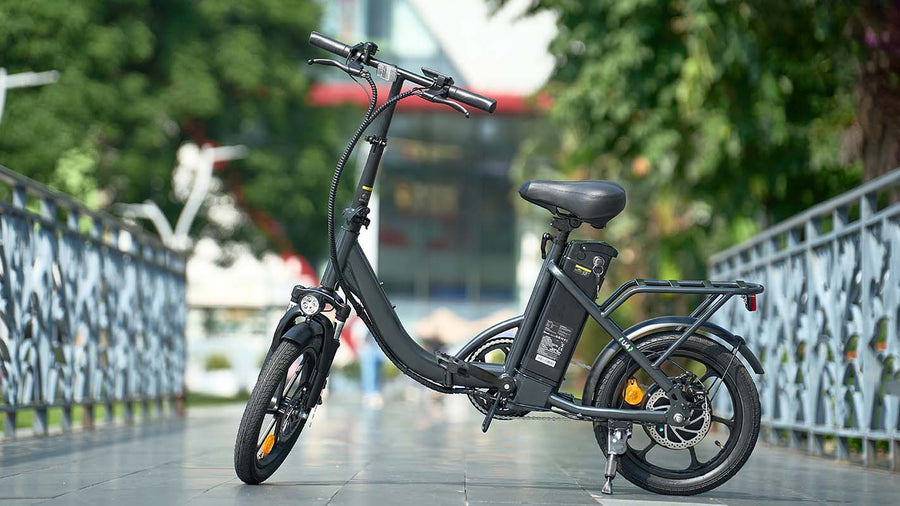









Still, need help? Contact Us: support@ihoverboard.com
What's the option? Check out the option now!
Leave us a message